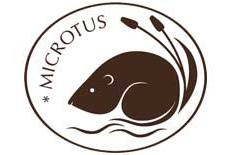The intensification of agricultural production, forestry and water streams regulations during last century influenced habitat loss which evolved depending on traditional extensive management. The survival of many species that prefer grazing, mowing, reed cutting or their existence is bound to balks, patches of vegetations on the fields, linear and bank vegetation as a part of sensitively managed country is in jeopardy due to the loss of suitable habitats.
Root vole (Microtus oeconomus mehelyi) lives in such habitats. The main cause of the root vole endangerment are intensive meliorations, wetlands drying, turning meadows into fields, abandonment of traditional use of meadows and wetlands for grazing, mowing and reed cutting. The most appropriate conservation actions for its protection is to bring back the traditional way of management, meadows mowing, reed cutting, revitalization of wetlands and bank vegetation.
Countries involved: Slovakia, Hungary, Austria
Coordinating beneficiary: Regional Association for Nature Conservation and Sustainable Development (BROZ), Slovakia
Project budget
Total budget: 3 626 018 €
European Commission contribution: 2 719 513 € (75%)
Own contribution: 906 505 € (25%)
Project objectives
Main objective:
The main aim of the project is to improve the recently unfavorable conservation status of root vole. Today is the whole population strongly fragmented in the consequence of changes in the land use and destruction of suitable habitats for species survival. The project will develop the strategy for successful restoration of root vole population mostly by habitats revitalization or improvement of its status on selected localities.
Partial objectives:
To secure the suitable conservation of root vole we will carry out following activities:
- Habitat restoration of selected wetlands
- Restoration of biocorridors connecting important wetland areas
- Restoration of wet meadows as root vole habitats and buffer zones between wetlands and arable land
- Land lease or purchase and introduction of appropriate habitat management
- Acquiring of relevant scientific data on target species and its habitats
- Awareness rising of key stakeholders and public
Coordinating beneficiary:
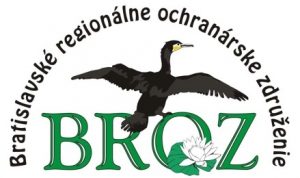
Project partners:

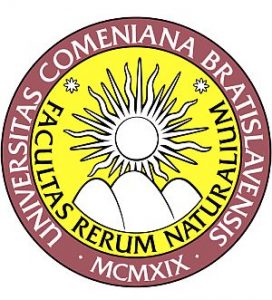
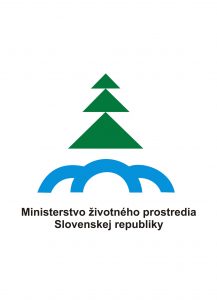

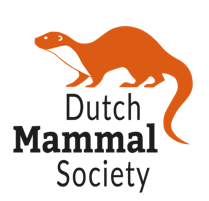

Countries involved: Slovakia, Hungary, Austria
Coordinating beneficiary: Regional Association for Nature Conservation and Sustainable Development (BROZ), Slovakia
Project budget
Total budget: 3 626 018 €
European Commission contribution: 2 719 513 € (75%)
Own contribution: 906 505 € (25%)
Project objectives
Main objective:
The main aim of the project is to improve the recently unfavorable conservation status of root vole. Today is the whole population strongly fragmented in the consequence of changes in the land use and destruction of suitable habitats for species survival. The project will develop the strategy for successful restoration of root vole population mostly by habitats revitalization or improvement of its status on selected localities.
Partial objectives:
To secure the suitable conservation of root vole we will carry out following activities:
- Habitat restoration of selected wetlands
- Restoration of biocorridors connecting important wetland areas
- Restoration of wet meadows as root vole habitats and buffer zones between wetlands and arable land
- Land lease or purchase and introduction of appropriate habitat management
- Acquiring of relevant scientific data on target species and its habitats
- Awareness rising of key stakeholders and public
Coordinating beneficiary:

Project partners:






Countries involved: Slovakia, Hungary, Austria
Coordinating beneficiary: Regional Association for Nature Conservation and Sustainable Development (BROZ), Slovakia
Project budget
Total budget: 3 626 018 €
European Commission contribution: 2 719 513 € (75%)
Own contribution: 906 505 € (25%)
Project objectives
Main objective:
The main aim of the project is to improve the recently unfavorable conservation status of root vole. Today is the whole population strongly fragmented in the consequence of changes in the land use and destruction of suitable habitats for species survival. The project will develop the strategy for successful restoration of root vole population mostly by habitats revitalization or improvement of its status on selected localities.
Partial objectives:
To secure the suitable conservation of root vole we will carry out following activities:
- Habitat restoration of selected wetlands
- Restoration of biocorridors connecting important wetland areas
- Restoration of wet meadows as root vole habitats and buffer zones between wetlands and arable land
- Land lease or purchase and introduction of appropriate habitat management
- Acquiring of relevant scientific data on target species and its habitats
- Awareness rising of key stakeholders and public
Coordinating beneficiary:

Project partners:






Root vole (*Microtus oeconomus mehelyi)
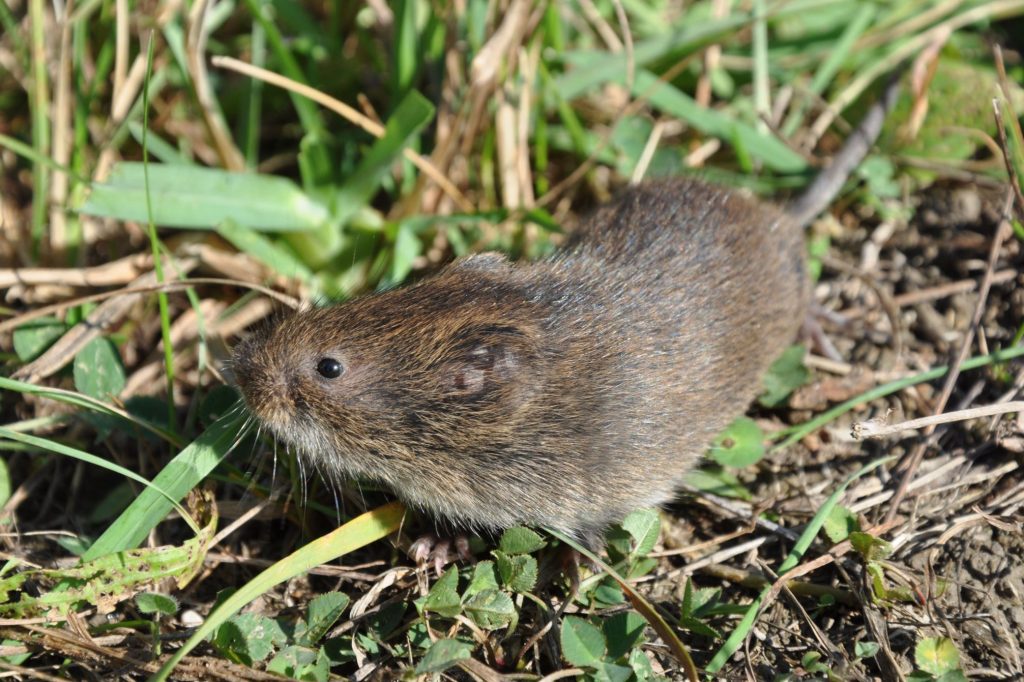
Biology
The main part of the Root vole food consists of bent-grass (Carex), reed (Phragmites), bulrush (Typha) and grass (eg. Molinia) . The mating season lasts from May to September, the number of litter is 1-3 per year and the number of youngsters is between 5 and 11. The spatial activity of the Root vole is not great, it is restricted by the habitat characteristics and its size.
Females have their first litter in the spring still on their winter habitats. Through late spring search voles wetter summer habitats and in late summer they find dryer habitat for wintering. These seasonal migrations might be influenced by local habitat conditions. The connection of populations by biocorridors is one of important factors to avoid the populations isolation.
Root vole habitat
Root vole is the species that lives in wetlands, swamps, flood-forests or banks with dense vegetation. Its habitat requirements are specific, prefers habitats localized in edge parts of bank of off-shore marshes. It is bound to stable environs and very susceptible to conditions changes, one of the key factors enabling the occurrence and survival of the root vole is suitable water regime of its habitat. Root vole prefers vegetation consisting mostly of sedges (Carex sp.).
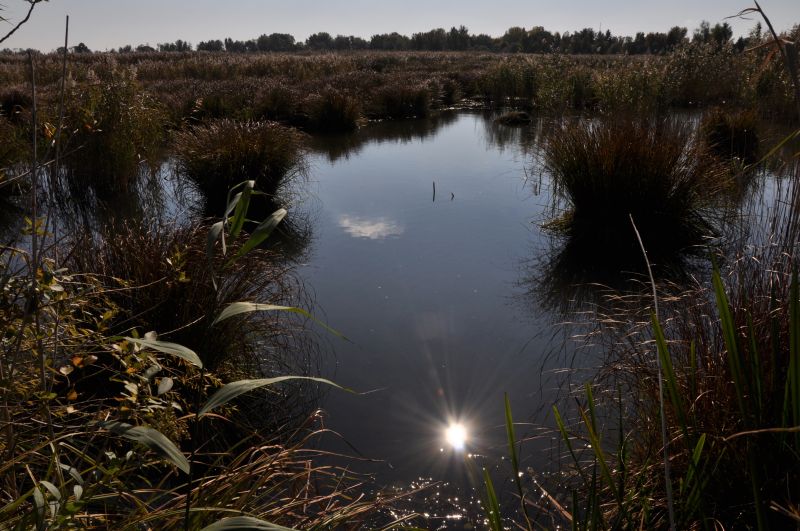
Sedges
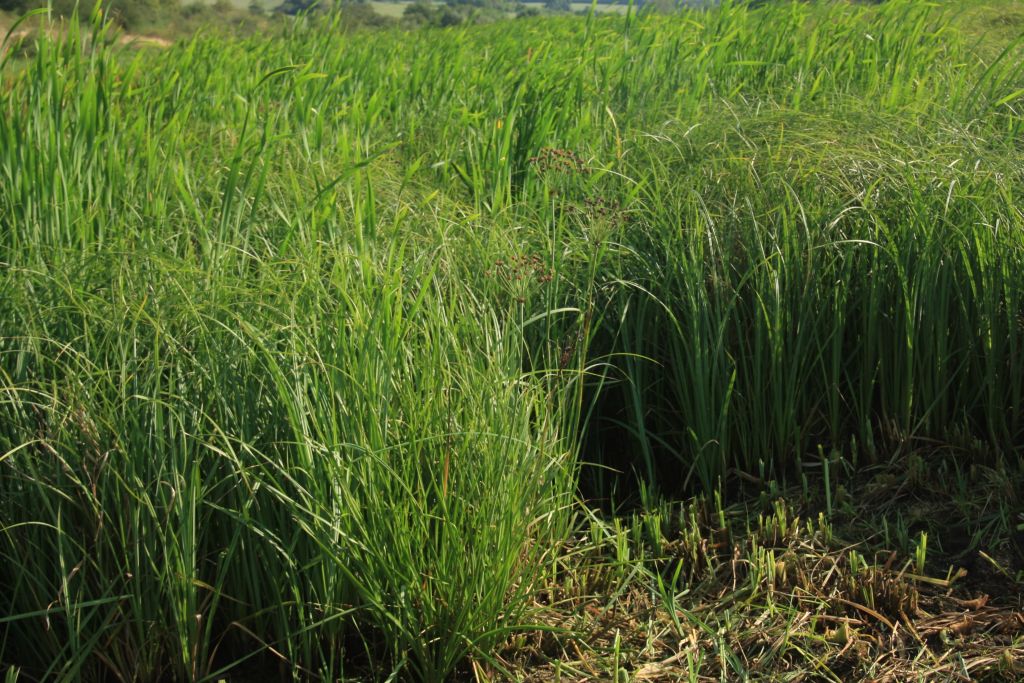
Mix of hygrophytes – sedges, reed and bulrush
Causes of threats
Despite the fact that the conservation of root vole has begun decades ago in all countries with its known occurrence, it is one of the most endangered small terrestrial mammals in this region. A loss of suitable habitats still represents the greatest threat. The main reasons are intensive meliorations and dewatering systems, tillage of lowland meadows, drying of wetlands, abandonment of traditional use of lowland meadows for grazing, reed cutting and collection, and intensification of agricultural and forestry production in general. As a result of these human activities, there was a significant decline in average water level in various parts of the project area. In some parts of the area, the water regime is artificially regulated. Previous natural seasonal variations in water regime in the area are nowadays strongly suppressed. As a result of this, areas with temporary water, shallow waters, reed beds and bent-grass have been reduced, which led to total drying of some areas. The most serious impact was on original wetlands that were left without surface water. The combination of these influences increases expansion of ruderal vegetation, which causes fragmentation and an extensive loss of suitable habitats for root vole. Increased population fragmentation along with habitat loss might result in genetic degradation and extinction, in particular in small isolated populations.
State of protection
- National legislation – law 543/2002 l.d.
- Vyhláška 492/2006, príloha 4 – prioritný druh európskeho významu, na ktorého ochranu sa vyhlasujú chránené územia
- Vyhláška 492/2006, príloha 6 – chránený druh európskeho významu, spoločenská hodnota 1000 €
- Bern convention – Convention on the Conservation of European Wildlife and Natural Habitats, annex 3
- Directive 92/43/EEC – Directive on the conservation of natural habitats and of wild fauna and flora, annex 2 and 4
- Slovak red list (Žiak D. & Urban P., 2001): endangered subspieces
Project area covers the whole known area of root vole presence, endemic subspecies that occurs only on south-western Slovakia, eastern Austria and north-western Hungary. All these localities are the part of exceptional cultivated landscape with rare flora and fauna species that is the mosaic of extensive and sensitively used landscape structures and areas with intensively used landscape for agricultural, forest and recreational activities. Root vole prefers wetland, meadows and bank vegetation habitats.
Wetlands are places, which existence is conditioned by water presence, constant or temporal, running or stagnant. Wetlands as one of the most endangered ecosystems in the world are the home for many endangered species of plants, birds, insects and amphibians; they help to regulate the amount of water during the floods. They improve the water quality as natural water treatments, regulate the flow of the water from the land and improve the microclimatic conditions of the area. They have direct importance for people as places of raw material production and recreation activities.
Lowland meadows were formed by the influence of long-term mowing and grazing as species rich habitats suitable for survival of many rare plants and animals. During last decades the majority of meadows were abandoned and changed for arable land or left without use overgrown by invasive and expansive vegetation.
Reed vegetation represents typical habitat of Danube region. In the past the reed management was the common way of land use; the reed was cut and gathered as construction material for roofs, buildings insulation and fences. This way of land use had positive impact on reed quality, diversification of bank vegetation and removal of nutrients and biomass from wetlands. Existing reed vegetation lacks this management for decades. Accumulated biomass contributes mostly to sedimentation and deposition in wetlands and regress of underground and surface water.

Sites of Community Importance in project area:
Area: 33,89 ha
District: NITRIANSKÝ KRAJ
Cadastre: Martovce
Area: 41,97 ha
District: NITRIANSKÝ KRAJ
Cadastre: Nesvady, Vrbová nad Váhom
Area: 164,85 ha
District: NITRIANSKÝ KRAJ
Cadastre: Zemianska Olča, Veľké Kosihy, Klížska Nemá
Area: 4297,89 ha
District: TRNAVSKÝ KRAJ
Cadastre: Baka,Bodíky,Dobrohošť, Gabčíkovo, Kyselica, Mliečno, Rohovce, Sap, Vojka nad Dunajom
SKUEV0093 Severný Bodícky kanál
Area: 2,9 ha
District: TRNAVSKÝ KRAJ
Cadastre: Baka, Bodíky
SKUEV0155 Alúvium Starej Nitry
Area: 408,19 ha
District: NITRIANSKÝ KRAJ
Cadastre: Hurbanovo, Komárno, Martovce, Svätý Peter
Area: 75,93 ha
District: TRNAVSKÝ KRAJ
Cadastre: Boheľov, Dolný Štál
Area: 459,6 ha
District: NITRIANSKÝ KRAJ
Cadastre: Číčov, Kľúčovec, Trávnik
Area: 61,48 ha
District: TRNAVSKÝ KRAJ
Cadastre: Boheľov, Gabčíkovo, Padáň, Pataš, Vrakúň
Area: 33,14 ha
District: BRATISLAVSKÝ KRAJ
Cadastre: Kalinkovo, Podunajské Biskupice
Area: 433,71 ha
District: BRATISLAVSKÝ KRAJ
Cadastre: Svätý Jur, Chorvátsky Grob
Area: 539,82 ha
District: TRNAVSKÝ KRAJ
Cadastre: Kľúčovec, Medveďov, Sap
Area: 869,03 ha
District: BRATISLAVSKÝ KRAJ
Cadastre: Kalinkovo, Nové Košariská, Podunajské Biskupice,Ružinov
Area: 85,83 ha
District: NITRIANSKÝ KRAJ
Cadastre: Marcelová
A. Preparatory actions
A.1 A study on the present occurrence of root vole in the project area
The research of Faculty of Natural Sciences of the Comenius University in cooperation with the colleagues from Austria, Hungary, Slovakia and Netherlands focuses on present knowledge about spatial distribution of root vole in Slovakia, Hungary and Austria. It includes field research (trapping into restraining traps) and its analysis as well as processing of already published information. The research is aimed at examination of localities with the occurrence of this species, estimation of the population size and the size of the areas in which root vole populations are found. Moreover, distances between individual localities where the species occurs, but also localities that it might expand to after the completion of the project, are being examined.
A.2 A background research study on population ecology, genetic variability and habitat requirements of root vole
The Faculty of Natural Sciences of the Comenius University is also elaborating a genetic and ecological study of root vole serving to estimate relative genetic variability and degree of isolation of individual populations of the species as well as a study of optimal habitat characteristics for this species.
A.3 Elaboration of an expert study on restoration of water regime in the Čilizsky potok stream and its catchment area in the area of Gabčíkovo – Číčov
In 2010 and 2011, Water Research Institute worked on an expert study which included hydrodynamic, topographic, numerical, simulation and physical model, graphs and maps which serve as background documents for planning, project documentation and realisation of restoring and revitalising measures for the change of water regime and restoration of the Čiližský potok stream.
The collection and analysis of hydrological data included measurements of groundwater levels, surface water levels, discharges in various rainfall conditions and surveying of 63 bed profiles of the Čiližský potok stream as well as other profiles on existing drainage channels, dams and sluice gates.
A.4 Elaboration of an expert study on restoration of water regime in other selected wetlands important for root vole
Based on a mapping of the present occurrence and state of population, other localities for improvement of living conditions of root vole were selected in following Special Areas of Conservation: Dunajské trstiny, Číčovské luhy, Pohrebište, Alúvium Starej Nitry and Listové jazero.
For a planned restoration of wetlands with the occurrence of root vole, Water Research Institute conducts a study for improvement of groundwater and surface water regime in aforementioned wetlands. Using the tools of numerical modelling, various possibilities for raising groundwater and surface water level are being examined. It should be raised in a way that the building of dams and sluice gates on minor canals that are currently used for draining the wetlands will create ideal conditions for the restoration of marshes.
A.5 Developing the technical documentation for restoration actions and construction of technical objects
A company dealing with projection of water management buildings has elaborated a project documentation for a planning permission and construction permit – projects of two culverts (first at the crossing of the Čiližský potok stream and Chotárny kanál canal and the second one at the crossing of the Čiližský potok stream and Vrbina-Holiare canal), a sluice gate at the beginning of Červený kanál canal.
A.6 An expert study on restoration of lowland meadows and management of bank vegetation
The study was elaborated to map all potential localities for restoration of lowland meadows and restoration management of reed beds.
A.7 An expert study on creating habitat corridors between localities with the occurrence of root vole
The aim of the study was to map suitable places for creating habitat corridors between areas with present and also potential occurrence of root vole populations. The purpose of planting habitat corridors is to create suitable migration routes for local populations. This will ensure connection between populations, a possibility to exchange genetic information and will enable root vole to spread to new localities.
B. Land rent and purchase
The purpose of purchase and renting of land is to introduce suitable management in areas where the natural character of the area requires appropriate conservation measures (such as restoration of grasslands or reed cutting) or allow for activities for restoration of habitats (raising the water level in wetlands, inundation of new areas, restoration of water flow in the Čiližský potok stream).
Purchase and a long-term renting of land is the most effective and often the only possible way of introducing conservation measures on private lands. The land is being purchased and rented in particular in areas where the measures will cause substantial changes in the present land use such as raising water level, inundation of arable land, transformation of arable land into permanent grasslands or implementing habitat corridors on arable land, preferably in municipalities Čiližská Radvaň, Číčov and Veľké Kosihy. Ownership or renting of land is a way of compensating owners for lower incomes resulting from transformation of arable land into meadows or wetlands.
Through purchase or renting of land we try to prevent negative development of human activities in the country. In some cases, economic activities may cause fragmentation of habitat corridors and migration routes, draining of marshes or simply make the restoration of water regime impossible. Ownership of land by an organisation for nature conservation is the best way to prevent undesirable interventions in protected areas.
C. Specific conservation actions
C.1a Restoration of the Čiližský potok stream
Restoration of the Čiližský potok stream in its entire length of 33.5 km is one of the most significant project activities. In the past, there were numerous wetlands in the catchment area of the stream. Most of them were drained and transformed into arable land, while in others, the water level decreased because of water management and ameliorative interventions in the past centuries. The planned changes of water regime in the Čiližský potok stream will contribute to the improvement of hydrological conditions; the water level will be the same as in 1950–1970 when root vole used to be much more abundant in this area.
The Čiližský potok stream is one of the last water courses with natural character in the Slovak part of the Danube Lowland. Its meandering course flows through the central part of the area with the occurrence of root vole and it works as its natural habitat corridor. However, with regard to the series of water management and agricultural interventions carried out in the last century, a free water flow in the Čiližský potok stream can be seen only in its upper part today. Diversion of its water into intersecting drainage channels resulted in a loss of water in its original bed and, as a consequence, two thirds of the stream lack flowing water or are completely dry.
Based on a study by the Water Research Institute (Project activity A.3) and in cooperation with several project partners, key institutions and organisations, following measures have been proposed for the restoration of the Čiližský potok stream:
A culvert at the crossing of the Čiližský potok stream and Chotárny kanál canal is the largest and most demanding structure in the process of the stream revitalisation. Chotárny kanál canal has been an important canal since it was built at the turn of the 19th and 20th century. In the past, the crossing with the Čiližský potok stream occurred thanks to a culvert built in 1938 when Chotárny kanál canal was led under the stream. After some time, the outlets of the culvert became blocked by alluvial material from Chotárny kanál canal and it was impossible to remove it. In the 1980s, a by-pass was built around the no longer functional culvert considering the necessity of using the canal. In this locality, the flow of Čiližský potok stream was disrupted and approximately one kilometre from the crossing with the channel (locality Šarkan), water flows from the stream through an overflow directly into Chotárny kanál canal. The present proposal for restoration of free water flow includes removal of the old culvert and its replacement with a new one which, however, will lead the Čiližský potok stream under the canal and then the stream will connect to its original bed. A non-functional culvert was demolished in April 2014, works on construction of a new culvert started in the end of July 2016 and we suppose it to be finished in October 2016.
The Čiližský potok stream is disrupted for the second time by Vrbina-Holiare canal into which the flow from the middle part of the stream is discharged through a culvert. Nowadays, it contains only rainwater, as the culvert with Chotárny kanál canal is no longer functional. Further from the crossing, there is no flow at all in the stream. In the place of crossing with the Vrbina-Holiare canal a new culvert was built in July 2016 to support the lower section of the stream with water in the length of approx. 5 km.
Until the end of the 18th century, the Čiližský potok stream flew directly into the Danube and since 1798 into Číčovské rameno oxbow lake where a sluice was built in 1860. The completion of the network of drainage channels after 1960 has completely cut off the lower section of the stream, so there was no water left in it. Measurements during the preparation of the restoration of the Čiližský potok stream have shown that it is not possible to connect the stream to Lyonský kanál canal near Číčov because of a difference in height between the canal bed and the stream bed and the stream would flow back towards the culvert on Vrbina-Holiare canal. For this reason, it was proposed that a new meandering bed in the length of 1.8 km should be built in Číčov and the Čiližský potok stream should be then connected to Číčov-Holiare canal.
C.1b Inclusion of restored areas in the vicinity of the Čiližský potok stream in the NATURA 2000 network
The Čiližský potok stream and adjacent wetlands are only partially included in the NATURA 2000 network. Some areas affected by the project are not included in the NATURA 2000 network, but after successful conservation measures, they will be designated and will become a part of this network.
C.2 Restoration of wetlands in the area of Číčov – Gabčíkovo
After the series of water management measures, remediation schemes and changes in landscape use in the last 50 years; conditions that were once favourable for root vole have changed dramatically. The most serious consequences were caused by cutting off of the last section of the Čiližský potok stream originally flowing into the area of Čiližské mokrade wetlands through building a dike, digging drainage canals through Hámske tŕstie wetland and by transformation of wetlands into fish ponds and arable land.
C.3 Restoration of selected wetlands important for root vole
On the basis of a mapping of the actual occurrence and the state of the population (Activity A.1), other localities were selected for the improvement of life conditions of root vole. Water management research (activity A.4) examined possibilities to improve water regime in these localities. Measures for restoration of at least 250 hectares of wetlands will include mainly building of minor objects (dams and sluice gates) on minor canals and drainage ditches used at present for the drainage of wetlands. Thanks to new objects, it will be possible to maintain the water accumulated during periods of rain in the wetlands. Sluice gates will enable regulation of water level and the length of the periods with various water levels. Throughout the activity A 4 proposals of the models for the restoration of following wetlands have been assessed: models for restoration of Listové jazero wetlands (Nesvady and Vrbová nad Váhom counties), Martovská mokraď, Alúvium Starej Nitry (Martovce county), Pohrebište (in Marcelová municipality) and Dunajské trstiny (in Veľké Kosihy municipality).
C.4 Restoration of grassland habitats
In the past, lowland meadows and pastures used to be very common in the Danube Lowland. They were found in areas unsuitable for arable land with high groundwater level and they represented important habitats for root vole. Because of drainage systems and soil remediation, most of the areas were ploughed up and transformed into an intensively used arable land with agricultural crops.
Restoration of grassland habitats includes cutting neglected vegetation on the edge of fields and wetlands overgrown with invasive and expansive species as well as the transformation of arable land into grassland by sowing grass and herb seeds typical for this region and by introducing regular management through cutting in the total area of at least 100 ha. Restoration of grassland habitats is concentrated in localities with the occurrence of root vole with the aim to create suitable habitats and thus extend localities of its occurrence.
C.5 Reintroduction of reed beds management
Most localities with the occurrence of root vole lie outside the active floodplain and growing reed contributes to increasing sedimentation and clogging of wetlands, which leads to transformation of ecosystems into dry habitats with time. Reed cutting is a good example of how to manage and preserve wetlands.
C.6 Creation of habitat corridors between the localities with the occurrence of root vole
Arable land represents a migration barrier for root vole. As a result, its population became strongly fragmented in an intensively used land after it had been drained and ploughed up. Isolation of these populations may cause complete extinction of root vole as a result of a genetic deformation.
By planting native trees and bushes and creating grass stripes or higher herbal vegetation, we will create at least 10 500 m of habitat corridors along water courses, old river branches and wet depressions in the country. The purpose of these corridors is to connect root vole populations not only to secure the exchange of genetic information between populations, but also to distribute this species into new localities and restored habitats.
E. Public awareness
The project for root vole conservation focuses not only on its protection and habitat restoration, but also on informing the public about this rare and threatened species. Cooperation with the public as well as with various stakeholders in the area plays a key role not only in supporting the project activities and their successful realisation, but in particular in conservation of the species after the project has finished.
A – Preparatory actions
A.1 A study on the present occurrence of root vole in the project area
The research and monitoring localities were selected based on existing knowledge about spatial distribution of the species and from the maps of landscape elements which could indicate the occurrence of root vole. The collection of samples in the field includes trapping into wooden restraining traps and marking by ear tags. To assess the presence of root vole in owl’s food, researchers carry out an analysis of owl pellets.
Collected data is compared with the database of the occurrence of target species in Slovakia. Current list of localities with the confirmed occurrence of root vole and a current map of its distribution has been created. The research aimed at discovering the presence of small ground mammals was conducted in 2010–2012 in 73 localities; the presence of root vole has been confirmed in 29 localities with more than 300 individuals trapped. These localities are concentrated in three relatively isolated areas – one around Čiližský potok stream (in particular near Pataš and Čiližská Radvaň), one around the Danube (in particular in the wetlands near Veľké Kosihy and Číčov) and one near the original river branch of the Nitra (near Martovce). The most significant locality of the occurrence of root vole in Slovakia is the wetland near Čiližská Radvaň. In 2013, the occurence of root vole was detected in the locality west from Gabčíkovo in the inundation of Danube. It had not been expected to detect this species here due to the impact of Gabčíkovo Dam and resulting changes in water regime.
A.2 A background research study on population ecology, genetic variability and habitat requirements of root vole
In localities where the occurrence of root vole has been confirmed, a long-term population study has been conducted by means of repeated trapping into wooden restraining traps. Two such localities were chosen – in Čiližská Radvaň and in Veľké Kosihy. Information about age structure and reproduction status is being assessed and tissue samples of the individuals are being collected for molecular analysis. The analysis will enable to assess the degree of genetic fragmentation of populations in the area. The first results show the existence of four genetically different and isolated root vole populations in Netherlands, Austria and Slovakia. The fourth group comprises population occuring in Slovakia, however this group is separated from others by Danube and Gabčíkovo Dam. A research continues with the aim to search for relations with Hungarian population.
In 2014 the research on Moe population continued. Recurrent catchments of Microtus oeconomus mehelyi individuals were carried out using quadrate method. The DNA analysis was carried out with interesting preliminary results. Consequently using Mantel test the relationship between genetics and geographical distance was also studied.
A.3 Elaboration of an expert study on restoration of water regime in the Čilizsky potok stream and its catchment area in the area of Gabčíkovo – Číčov
For restoration of free water flow in the upper and middle section of the Čiližský potok stream, two culverts were projected at the crossing of the stream with canals as well as building a new meandering bed to connect the stream to existing canal network. To assess optimal parameters and functionality of the proposed culverts, a physical model was created in scale 1:10, on which trial measurements of different flows at the crossing with canals were performed. In a study, two problematic sections were identified as to restoration of free water flow – one in the village Pataš where the watercourse is blocked by a mass of alluvial algae trapped in reed (rkm 22.1 km) and the other one near Ižopská samota in the county of Veľký Meder where the bed was filled with a landfill consisting of industrial and domestic waste (rkm 13.1).
For restoration of water regime in a nearby wetland in Čiližská Radvaň, a reconstruction of a sluice gate on Hánsky kanál canal and building a sluice gate on Červený kanál canal was projected. By damming up the sluice gates, it will be possible to flood the whole wetland periodically once in several years.
Water level in the second wetland important for root vole next to Čiližský potok stream in cadastre of village Pataš (locality Bahno) will be regulated by an adequate water dam on the culvert at the crossing of Čiližský potok stream and Chotárny kanál canal by stop logs regulation which will enable to perform occasional floods.
A.4 Elaboration of an expert study on restoration of water regime in other selected wetlands important for root vole
Restoration of the SAC Listové jazero in the cadastre of Nesvady and Vrbová nad Váhom is planned through raising the water level using water dam on Martovský kanál canal which will ensure necessary water level in Divý kanál canal to support SAC Listové jazero with water
To improve water regime in Martovská mokraď wetland it is proposed to raise water level in canal Tátoš by construction of a sluice gate.
Several options have been proposed to restore wetlands in Alúvium Starej Nitry – to open closed (filled with soil) parts of Tátoš canal and build sluice gate, to build siphon from the water stream Old Nitra and distribute water into wetlands, to fill with soil and completely close draining channels or to excavate small depressions in the places with higher underground water level and drill the impermeable layer of clay to fill wetlands.
For the improvement of water regime in Dunajské trstiny it is necessary to build regulating sluice gate on Tavarský channel draining the wetland. Similarly, restoration of a wetland Pohrebište has been proposed – sufficient measurement will be to regulate the draining by construction of a sluice gate.
A.5 Developing the technical documentation for restoration actions and construction of technical objects
The technical documentation has been elaborated in cooperation with Water Research Institute and Slovak Water Management Enterprise, state owner enterprise, branches Šamorín and Bratislava. After obtaining construction permits, permit to work in wetland and elaborating flood plan, we finally started with revitalisation of Čiliž potok brook in the spring 2014. Nowadays, projects on other selected wetlands are being prepared. In 2015 technical documentation for restoration of wetland in SCI Dunajské trstiny was prepared.
A.6 An expert study on restoration of lowland meadows and management of bank vegetation
The study contains an assessment of the present state of the localities proposed for management, the results of phytosociological research, proposal for optimal meadow management, the most appropriate methods and models of cutting as well as the way of cutting to reintroduce reed bed management. The study concentrated on Special Areas of Conservation Čiližské močiare, Dunajské trstiny, Alúvium Starej Nitry and Číčovské luhy.
A.7 An expert study on creating habitat corridors between localities with the occurrence of root vole
The study contains a proposal for planting habitat corridors in SAC Dunajské trstiny, Čiližské močiare (several localities on the Čiližský potok stream and localities Pataš – Bahno and Čiližská Radvaň) and in the area of the Stará Nitra (Alúvium Starej Nitry and Martovská mokraď wetland). Sites suitable for planting native trees and bushes are incorporated together with ecological demands of the species for habitat corridors as well as the optimal composition of vegetation in these corridors.
B – Land rent and purchase
In Čiližská Radvaň municipality we have purchased 27,72 hectares of land in Site of Community Importance Čiližské močiare which is situated next to the locality with the highest occurence of root vole species. We restored a wet meadow on a land which had been recently ploughed up. We aimed to enlarge the locality suitable for surviving of the species.
In the period of may 2014 – september 2015 we purchased another 4,43 hectares of land in cadastral areas Číčov and Klížska Nemá, all in sites of community importance Čiližské močiare and Dunajské trstiny.
Till the end of the project we managed to gain 20,63 hectares of the land by purchase or land swap in Sites of Community Importance Číčovské luhy, Čiližské močiare, Dunajské luhy, Dunajské trstiny, Kľúčovské rameno and Pohrebište. Overall we acquired 100,60 hectares of the land in the project.
C – Specific conservation actions
C.1a Restoration of the Čiližský potok stream
To restore free water flow in the Čiližský potok stream, it is necessary to clean some overgrown and blocking sections (e.g. near Gabčíkovo, Pataš and Čiližská Radvaň). The most intensive works were carried out in 2012 when BROZ in cooperation with the town Veľký Meder removed an illegal landfill from the bed of the Čiližský potok stream containing mainly industrial and domestic waste. The landfill was near Ižopská samota in the county of Veľký Meder and it had blocked about 650 m of the bed. Approximately 300 tons of waste was removed from the locality. The works continued in spring 2014 – we removed silt deposits from 250 m long section of the brook in Pataš village.
Restoration of wetlands near the Čiližský potok stream with the occurrence of root vole focuses on two localities: a locality Bahno near Pataš village and a locality Čiližská mokraď wetland near Čiližská Radvaň village. In Bahno, there will be a change in water regime due to building of the culvert on Chotárny kanál canal which will enable the water to flow not only in the stream, but thanks to sluice regulation, it will be also possible to inundate the wetland. Restoration of water regime in the wetland near Čiližská Radvaň will be achieved through reconstruction of existing non-functional sluice gates on Hánsky kanál canal and through building a new sluice gate on Červený kanál canal. Thanks to them, it will be possible to retain water accumulated in the wetland during periods of rain and to regulate the duration and periodicity of periods with various water levels. Works on wetland restoration began in spring 2014 starting with construction of a sluice gate on Červený channel. Since the sluice gate construction in 2014 the water level in wetland is closely observed by project partner VUVH (Action E.2). The area of wetlands restored by the constructed sluice gate is 82.5 ha large.
C.1b Inclusion of restored areas in the vicinity of the Čiližský potok stream in the NATURA 2000 network
Ministry of Environment of the Slovak Republic has sent European Commission an Amendment to the National List of Special Areas of Conservation. SAC Čiližské močiare (SKUEV1227) has been included within 97 new or enlarged Special Areas of Conservation in Slovakia. Proposed SACs will represent an enlargement of existing SAC Čiližské močiare (SKUEV0227) and will include central part of the Čiližský potok stream as well as the wetland in Čiližská Radvaň. Thus, the area will be enlarged by 329.58 ha (present land area is 61.48 ha) and will extend to six cadastral areas (villages Číčov, Čiližská Radvaň, Ižop, Kľúčovec, Pataš, Gabčíkovo and town Veľký Meder).
C.2 Restoration of wetlands in the area of Číčov – Gabčíkovo
In 2013, restoration of Číčovské wetlands in locality Hámske tŕstie has began in the area of 46,5 hectares. A sluice gate on existing drainage channel has been reconstructed to keep necessary water level in the wetland. Further restoration activities are planned to be carried out in 2014. Nowadays, measurings of water levels for bringing water in the wetlands near Gabčíkovo are being assessed.
Restoration of the wetland Hámske tŕstie in SCI Číčovské wetlands continued in 2015 by revitalising another 31,1 hectares. Area as large as 24,8 hectares in SCI Číčovské luhy consisting of marshes, shallow ponds, reed beds and sedge vegetation was restored after it was used as transport and storage area for harvested wood. Restoration of other wetlands in Číčov – Gabčíkovo area started in August 2014 and consequently these wetlands were created by the end of 2015 – localities Vojka (24,3 hectares), Baka 1 (14,2 hectares), Baka 2 (3,7 hectares), Baka 3 (1,7 hectares), Číčov 2 (6,22 hectares), Baka 4 (3,1 hectares) Baka 5 (1,7 hectares), Baka 6 (2,71 hectares) and Baka 7 (6,2 hectares). In total 166,23 hectares were restored, which is 16 hectares more than it was planned in the project.
C.3 Restoration of selected wetlands important for root vole
In 2015 one of the wetlands was restored in SCI Alúvium Starej Nitry in cooperation with local agricultural company and major owner of the land. 9,8 hectares of marshy meadows and reed beds was created this way. Restoration of other 48,6 hectares was done by installation of sluice gate on the outlet of drainage channel from the wetland. A sluice gate on Tavarský channel was built in the autumn/winter 2015 restoring 108.9 hectares of the wetland in lower part of the SCI Dunajské trstiny near Veľké Kosihy village; the upper part will be restored on the area of 18.7 hectares. Water regime in SCI Pohrebište will be restored on 47.5 hectares and in Martovská mokraď on 33.6 hectares.
V projekte sme tak obnovili mokrade na vysušených územiach alebo zlepšili vodný režim v existujúcich mokradiach v miestach výskytu hraboša severského panónskeho na celkovej ploche 267,1 hektára, o 21 hektárov viac ako sme predpokladali.
C.4 Restoration of grassland habitats
In 2011 and 2012, 11.3 ha of meadows were cut on minor spots in the sites of community importance (6.3 ha in SCI Dunajské trstiny and 5 ha in SCI Šúr) within the project. In 2012, we started establishing grasslands in the area of 16.2 ha in Site of Community Importance SKUE1227 Čiližské močiare (cadastral area of Čiližská Radvaň), in 2013 we continued on additional 6,2 hectares. The created grasslands replace arable land intensively used for agricultural production. After building the sluice gate on Červený kanál canal (Activity 1a), they will be periodically inundated. At last, the created grasslands will extend the habitat of root vole in the locality with one of the most significant populations of this species in the world. Grasslands were mowed several times in wide stripes to let grown vegetation for root voles living in this area as the refuge against predators (until the vegetation in mowed stripes is not grown-up yet). By mulching and mowing we also restored an overgrown wetland in Dunajské luhy in the area of 4,9 hectares and a wetland in Čiližská Radvaň in the area of 12,6 hectares.
Later in 2014/2015 another hectares of grasslands were restored – 26,2 hectares in SCI Číčovské luhy, 8 hectares in SCI Dunajské luhy, 6,5 hectares in SCI Alúvium Starej Nitry and 11,6 hectares in UEV Martovská mokraď. The restoration included mowing, mulching or seeding regional seed mixtures.
C.5 Reintroduction of reed beds management
In the winter season 2011/2012, we started the first reed cutting in the Site of Commnity Importance Dunajské trstiny in the area of 13,5 hectares. Reed cutting is performed in winter months, outside the nesting period of birds using reed. When cutting, we leave stripes of uncut reed in the area serving as a temporary refuge for animals until the time the cut reed grows again. In winter 2012/2013, we continued with reed cutting adding 38,1 hectares, in 2013/2014 adding another 86,11 hectares in Sites of Community Importance Dunajské trstiny and Číčovské luhy. The overall objective of the project is to cut 150 hectares of reed.
The localities already cut in the past within the project in SCI Dunajské trstiny and SCI Číčovské luhy were mowed repeatedly in the winter season 2014/2015. Two localities were added in SCI Čiližské močiare (5.4 hectares and 6.3 hectares) and previously uncut locality in SCI Dunajské trstiny (6 hectares) was added as well in the season 2014/2015. In the winter season 2015/2016 we continued in reed mowing in SCI Dunajské trstiny and SCI Číčovské luhy. The overall area of managed reed beds covers 155.48 hectares.
C.6 Creation of habitat corridors between the localities with the occurrence of root vole
Planting of biocorridors began in autumn 2013 in an important locality with the root vole occurence near Čiližská Radvaň in the lenght of one kilometer. In the line vegetation we planted 13 species of native trees and shrubs suitable for wet conditions (willows, poplars, common dogwood, bird cherries, mountain-ashes, common hawthorn) in the overall number of 500 trees and shrubs.
In 2014/2015 the action continued in other SCIs where biocirridors were proposed by the study. Biocorridors were planted in following SCIs: Čiližské močiare (in locality Bahno 350 trees were planted in length 1.4 km and in locality Pataš along Čiližský potok brook in length 250 meters), in SCI Dunajské trstiny created biocorridors connected localities of root vole in length 1.5 km by planting 370 trees, in SCI Dunajské luhy 4 km of biocorridors were planted with 2000 trees and in SCI Číčovské luhy 2,5 km of biocorridors were created.
E – Public awareness
During the project, we carried out a number of educational activities such as lectures and excursions for the public, installation of information panels in Slovakia, Austria and Hungary and issuing educational flyers, posters and brochures. Promotional materials also include t-shirts, pens, toys, stickers and calendars with motives of root vole and its habitats. In 2014/2015 we issued new stickers, postcards, posters and a game pexeso (pairs) with motives of the root vole and its habitats, in 2016 we produced Layman report to summarize the activities done during the project and we also issued a brochure about wetland restoration. The project has been presented to local inhabitants, university students studying natural sciences, pupils and students of secondary and primary schools, specialists and scientists as well as the general public. Altogether we organized 36 presentations for 734 people and 35 excursions in project sites for 608 people. During the project we presented the actions in 6 TV shots, 4 radio interwiev and 72 articles issued in printed or online version. We also attended 22 conferences in Slovakia, Czech Republic, Austria, Germany and Luxemburg, where we promoted the project.
In 2015 on 18th to 20th May we organized a workshop about Microtus oeconomus in Illmitz in information centre of NP NeusiedlerSee-Seewinkel. Presentations were given on Microtus oeconomus mehelyi research, management and restoration activities taken for its conservation, excursions were organized to project sites in Austria and Slovakia. There were 26 people participating from four countries – Slovakia, Hungary, Netherlands and Austria.
Travelling exhibition about the life of root vole in the wetlands of the Danube region has a shape of an over life-size root vole burrow. One part of the exposition is a panoramic cinema where a short documentary film about root vole and wetlands is shown, a video laboratory with owl pellets analysis, activities of sensory perception, food chain model or a magnetic board with interactive games. More than 9600 visitors have seen the exhibition in 3 years of travelling in 21 different places in Slovakia and Hungary.
We have shot a documentary film about life of root vole which has already been broadcasted in Hungarian television and was also used in travelling exhibition. The film is available also with Slovak and English subtitles.
The second film created in the project titled „The secret inhabitant of the wetlands near Čiližský potok brook – the root vole” is 26 min. long and it documents works of BROZ in the LIFE project dealing with the conservation of this rare root vole. It contains unique shots from a root vole nest, building works on the restoration of the Čiližský potok brook and sluice gates holding back the water in wetlands. Viewers can watch the life of the root vole during one year in the context of conservation actions to bring water back to wetlands in Danube region and to save these ecosystems. The film was shortly after its finishing broadcasted in several different regional TVs in Slovakia and Hungary. The film also contains Slovak, English, German and Hungarian subtitles and it is beeing distributed to public, TVs, schools in Slovakia, Hungary and Austria.
Restoration of wetland near Vojka
Before
After




